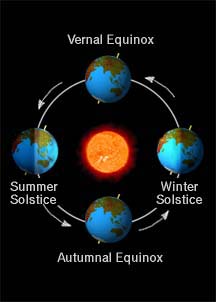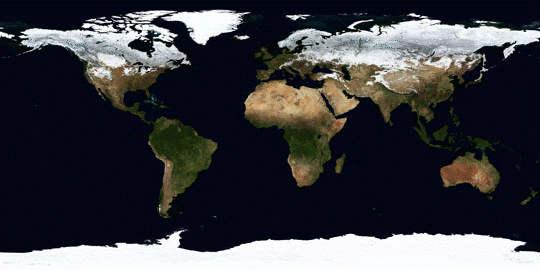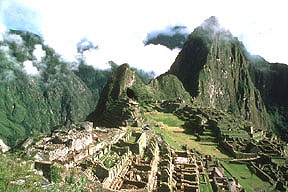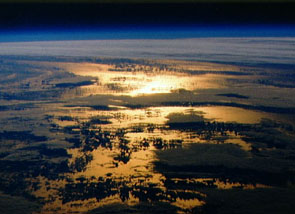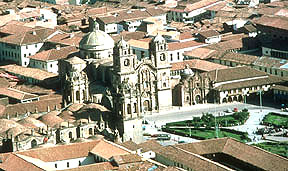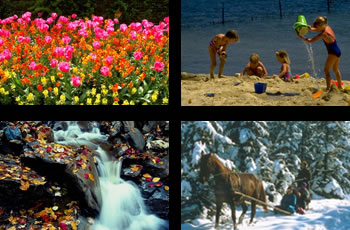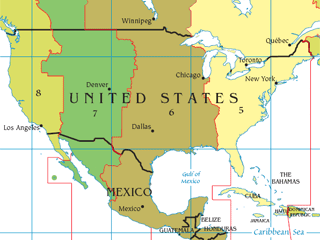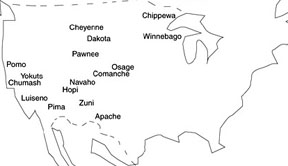Click on image for full size
The Seasonal Merry-Go-Round
The tilt of Earth's rotational axis and the Earth's orbit around the Sun work together to create the seasons. As the Earth travels around the Sun, it remains tipped over in the same direction, with its north pole pointed towards the star Polaris. This 23.5 degree tilt of the Earth's rotational axis to the Earth's orbital plane about the Sun (the ecliptic plane) causes Earth's two hemispheres to be exposed to different intensities of sunlight for different amounts of time throughout the year. The changing intensity and changing amount of sunlight to the different hemispheres has given rise to the seasons of summer, fall, winter and spring.In the Northern Hemisphere, the first day of summer, called the summer solstice, is around June 21st. The summer solstice marks the point at which the north pole of the Earth is tilted at its maximum towards the Sun. For any location in the northern hemisphere, the day of the summer solstice is the longest day of the year with the Sun reaching its greatest angular distance north (or its highest point in the sky for the year for that given location). During the time surrounding the summer solstice, the northern hemisphere is getting more direct sunlight for a longer amount of time, which heats that hemisphere efficiently causing warmer temperatures on average.
Notice that when the northern hemisphere is tilted towards the Sun, the southern hemisphere is tilted away. This is why people in the North America, Europe, Asia, and other places north of the equator have the opposite season of people in South America, Australia, and other places south of the equator. So, while the summer solstice marks the beginning of summer for the northern hemisphere, it marks the beginning of winter for the southern hemisphere.
The first day of winter for the northern hemisphere is called the winter solstice. This day, around December 21st each year, is when the north pole of the Earth is tilted at its maximum away from the Sun. The Sun’s rays are less intense at this time of year because they are spread over a greater surface area and must travel through more energy-absorbing atmosphere to reach the Earth. Also, the winter solstice is the shortest day of the year for those who live in the northern hemisphere. The decreased intensity of the sunlight received along with less daylight hours leads to the cooler temperatures often felt by those living in the northern hemisphere during winter months. Again, things are reversed for the southern hemisphere, where summer is being ushered in at the time of the winter solstice.
Of course, between the season of summer and winter in the northern hemisphere comes the season of fall. The beginning of fall in the northern hemisphere is marked by the autumnal equinox (around September 23rd each year). And between the seasons of winter and summer in the northern hemisphere is spring. The beginning of spring in the northern hemisphere is marked by the vernal equinox (around March 21st each year). At the two equinoxes, neither the north pole nor the south pole is inclined toward the Sun. Equinox literally means "equal night". On the vernal (spring) and autumnal (fall) equinoxes, day and night are about the same length all over the world.


